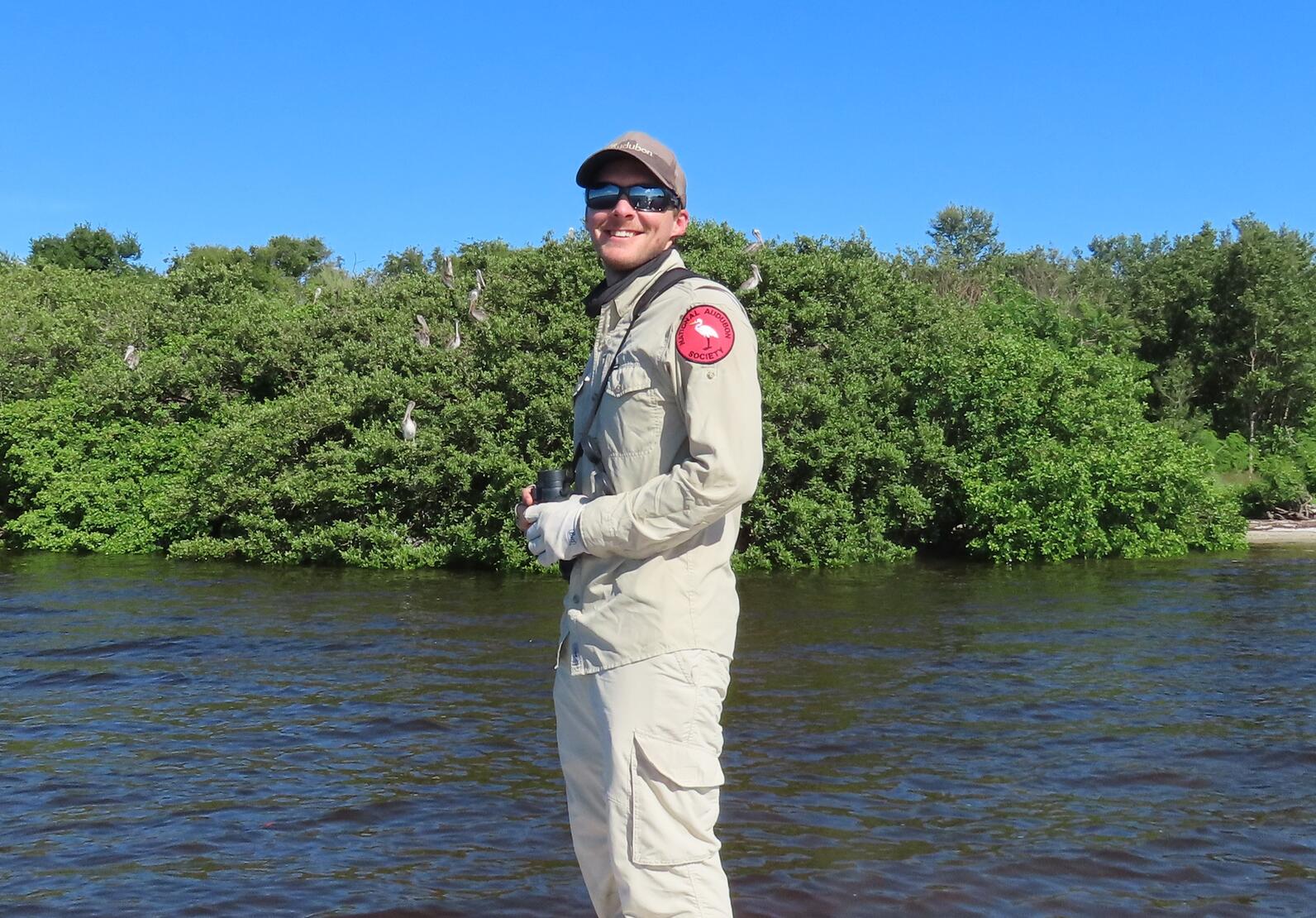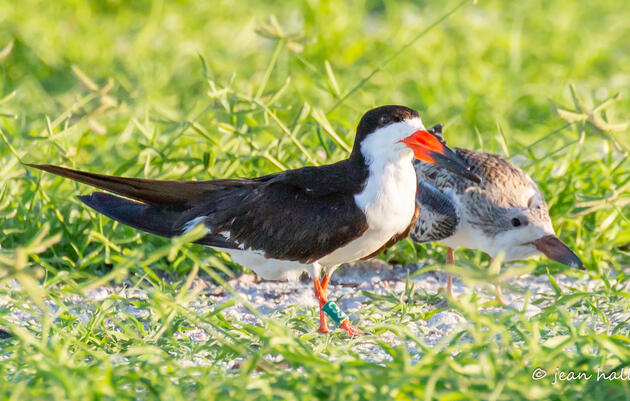Jeff Liechty, Coastal Biologist at Audubon's Florida Coastal Island Sanctuaries, monitors sea, shore, and wading bird populations throughout the Tampa Bay region. But Jeff keeps a special eye out for banded Royal and Sandwich Terns. Why? He banded birds of these two species in Louisiana as part of his graduate work from 2012-2014!
"I was studying tern breeding ecology at Nicholls State University," he explains, "Specifically hatching success, survival, site fidelity, and diet of Royal Terns and Sandwich Terns on Isles Dernieres Barrier Islands Refuge. These islands were directly impacted by the Deepwater Horizon oil spill, and this project sought to understand how these birds use the islands, the surrounding waters, and how their populations were faring in the aftermath of the tragedy.”
By banding the birds, Jeff and his team could look at site fidelity and survival. How many birds return to breed where they bred the year before? How many birds return to breed at the site where they hatched? How many juveniles and adults survive each year?
Almost a decade later, Jeff and researchers are still collecting band resight information to help answer these questions. Kylie Wilson, an Audubon Florida Shorebird Coordinator, spotted one of Jeff's banded Sandwich Terns in July in Sarasota, and another in August.

“Terns are long-lived species, over thirty years in some cases. So the story of these birds continues long after the research project ended," Jeff says.
The banding project has already taught us that many Sandwich Terns head east from Louisiana after nesting season, and follow the Florida shoreline south along the Gulf Coast, sometimes along the Atlantic Ocean as well. Since Sandwich Terns leave Louisiana after nesting season, Jeff expects another dozen or so sightings from now through October. While a few may linger in Florida throughout the winter, the majority appear to move into the Caribbean, and as far away as the Pacific Coast of Panama! A member of the Panama Audubon Society (not affiliated with Audubon Florida) combs through the thousands of Sandwich Terns that winter in the Gulf of Panama and has even spotted the same bird two years in a row.
“These birds travel thousands of miles each year, and rely on resources throughout that range to complete their annual cycle," Jeff concludes. "It’s a privilege to see them each fall as they pass through southwest Florida, where I can continue to appreciate their beauty, and occasionally cross paths with one that I banded. It gives me hope to see a flightless chick that I held in my hands eight years ago still out there doing its tern thing.”
Have you spotted a banded bird? Record your sighting here.








